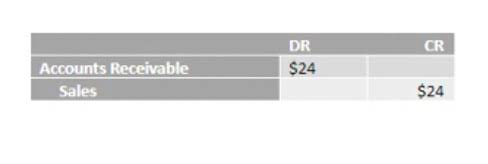
In sum, assets are the priority, liabilities are next in line, and equity is last. There are many types of assets in a business, and each plays an important role in helping the business operate successfully. Assets can include tangible things like equipment and furniture, as well as intangible things like customer relationships and intellectual property. Asset management is a critical part of running a successful business.
- The basic accounting equation is fundamental to the double-entry accounting system common in bookkeeping wherein every financial transaction has equal and opposite effects in at least two different accounts.
- For example, accounts receivable must be continually assessed for impairment and adjusted to reflect potential uncollectible accounts.
- If that $20 was net profit, it goes toward the owner’s equity in the business.
- This system is called double-entry accounting and it refers to the fact that every entry affects two different accounting categories.
- The left side of the balance sheet is the business itself, including the buildings, inventory for sale, and cash from selling goods.
- This can help you determine if you should apply for an unsecured business loan or more traditional bank debt.
- This indicates whether you’re being efficient with your inventory, and stocking the right products.
Plus, if you need a loan or line of credit, understanding the relationship between assets, liability and equity is key. Taking out a loan means adding to your liability, and you need to be sure that will still balance out in your company’s overall finances. Upon calculating the total assets and liabilities, company or shareholders’ equity can be determined. For example, the equity of a company with $1 million in assets and $500,000 in liabilities is $500,000 ($1,000,000 – $500,000).
Assets, Liabilities, Equity and Double-Entry Accounting
As such, adequate and proper record-keeping is the bedrock of having a statement of financial position that is devoid of errors and provides the right information about a company’s financial standing. Understanding how they relate to your situation can really help you before you start to look for a business loan. At the end of each fiscal year, the net profit (or loss) from the profit and loss is added to (or subtracted from) retained earnings and the amounts in the income and expense accounts reset to zero. Credits, on the other hand, are recorded on the right side with double-entry accounting. Credits always increase income, liabilities, and equity, and decrease assets, expenses, and dividends.
- Our editors and reporters thoroughly fact-check editorial content to ensure the information you’re reading is accurate.
- This means that the balance sheet should always balance, hence the name.
- Nevertheless, the owners and private shareholders in such a company can still compute the firm’s equity position using the same formula and method as with a public one.
- This means that they need to be maintained and operated properly in order to provide the best possible service to customers.
- Unlike liability accounts which are negative accounts and are reported on the Balance Sheet, expenses maintain a positive balance and are reported on the Income Statement or Profit and Loss Report (P&L).
- Knowing what goes into preparing these documents can also be insightful.
Company or shareholders’ equity is equal to a firm’s total assets minus its total liabilities. Company or shareholders’ equity often provides analysts and investors with a general idea of the company’s financial health and well-being. If it reads positive, the company has enough assets to cover its liabilities. Under the umbrella of accounting, liabilities refer to a company’s debts or financially-measurable obligations. Total assets is calculated as the sum of all short-term, long-term, and other assets. Total liabilities is calculated as the sum of all short-term, long-term and other liabilities.
Other formulas for assets, liabilities, equity
The purpose of this article is to consider the fundamentals of the accounting equation and to demonstrate how it works when applied to various transactions. A company usually must provide a balance sheet to a lender in order to secure a business loan. A company must also usually provide a balance sheet to private investors when attempting to secure private equity funding. In both cases, the external party wants to assess the financial health of a company, the creditworthiness of the business, and whether the company will be able to repay its short-term debts. The other report that small business owners need to understand is their balance sheet. It includes a summary of your total assets, liabilities, and equity.
All business owners are familiar with the profit and loss equation, because it can give you a clear picture of where the money is coming from and where it’s being spent. Current liabilities are usually paid with current assets; i.e. the money in the company’s checking account. A company’s working capital is the difference between its current assets and current liabilities. Managing short-term debt and having adequate working capital is vital to a company’s long-term success.
Create a free account to unlock this Template
Accounts receivable is an asset account that comprises money owed to the company by its clients. Prepaid expenses are payments made in advance for products or services such as insurance, electricity, cable tv, and internet. Some examples of equity are treasury stock, common stock, preferred the accounting equation may be expressed as stock, and retained earnings. Assets, liabilities, and equity are the building block of the balance sheet. In simple terms, assets refer to resources you own, liabilities refer to all that you owe while equity refers to the leftover after subtracting what you owe from all that you own.
This account includes the amortized amount of any bonds the company has issued. Here’s a simplified version of the balance sheet https://www.bookstime.com/ for you and Anne’s business. Right after the bank wires you the money, your cash and your liabilities both go up by $10,000.
Leave a reply







